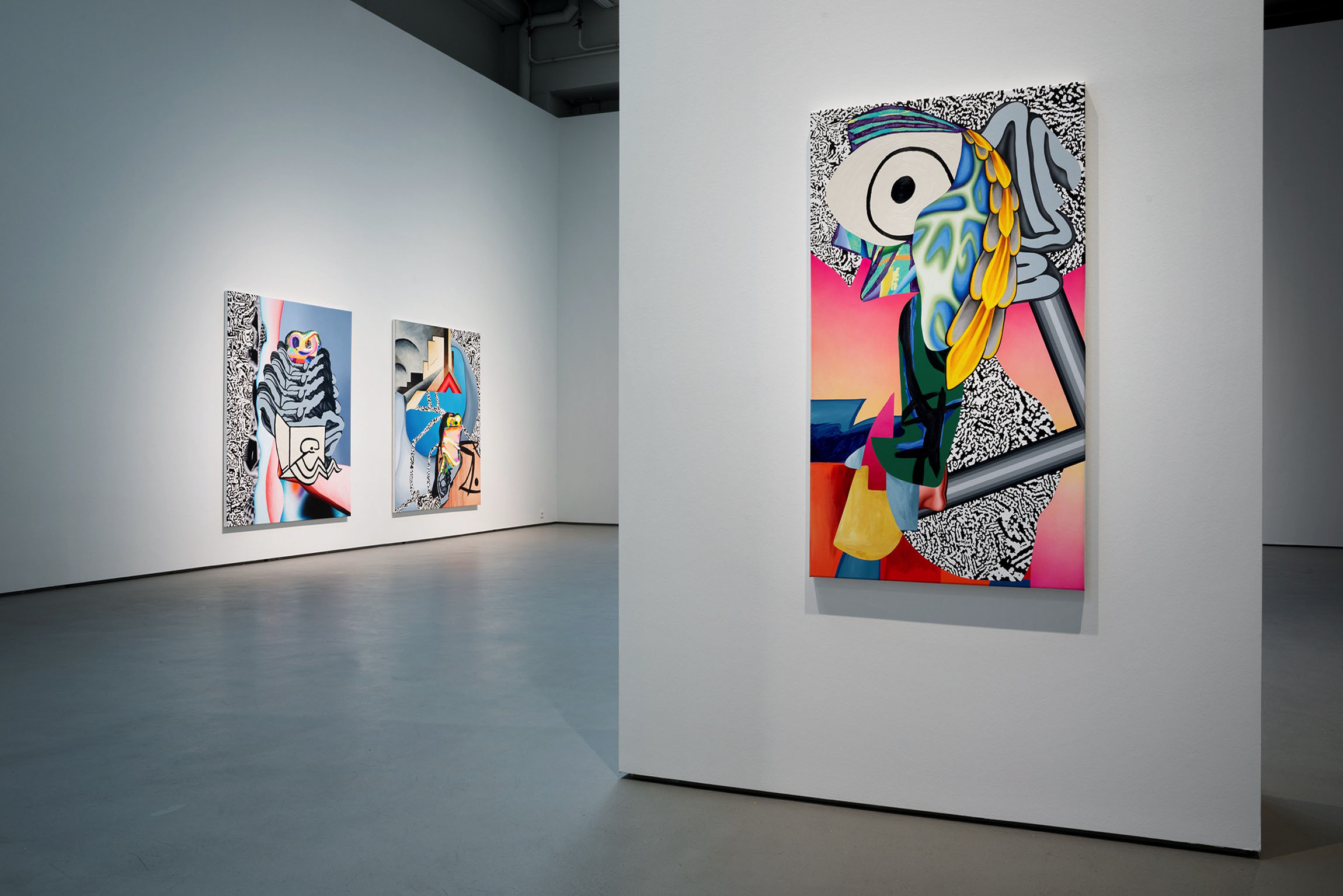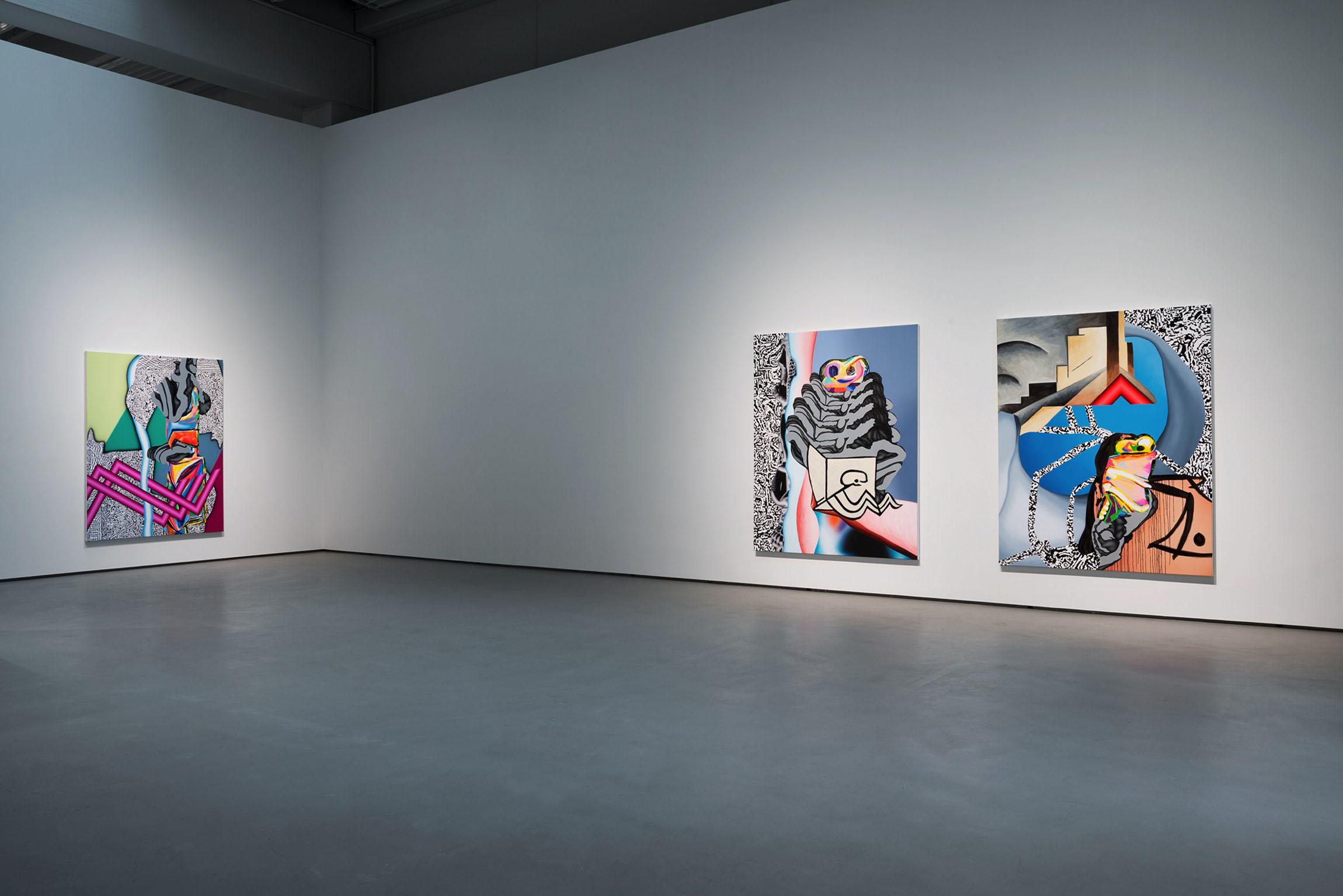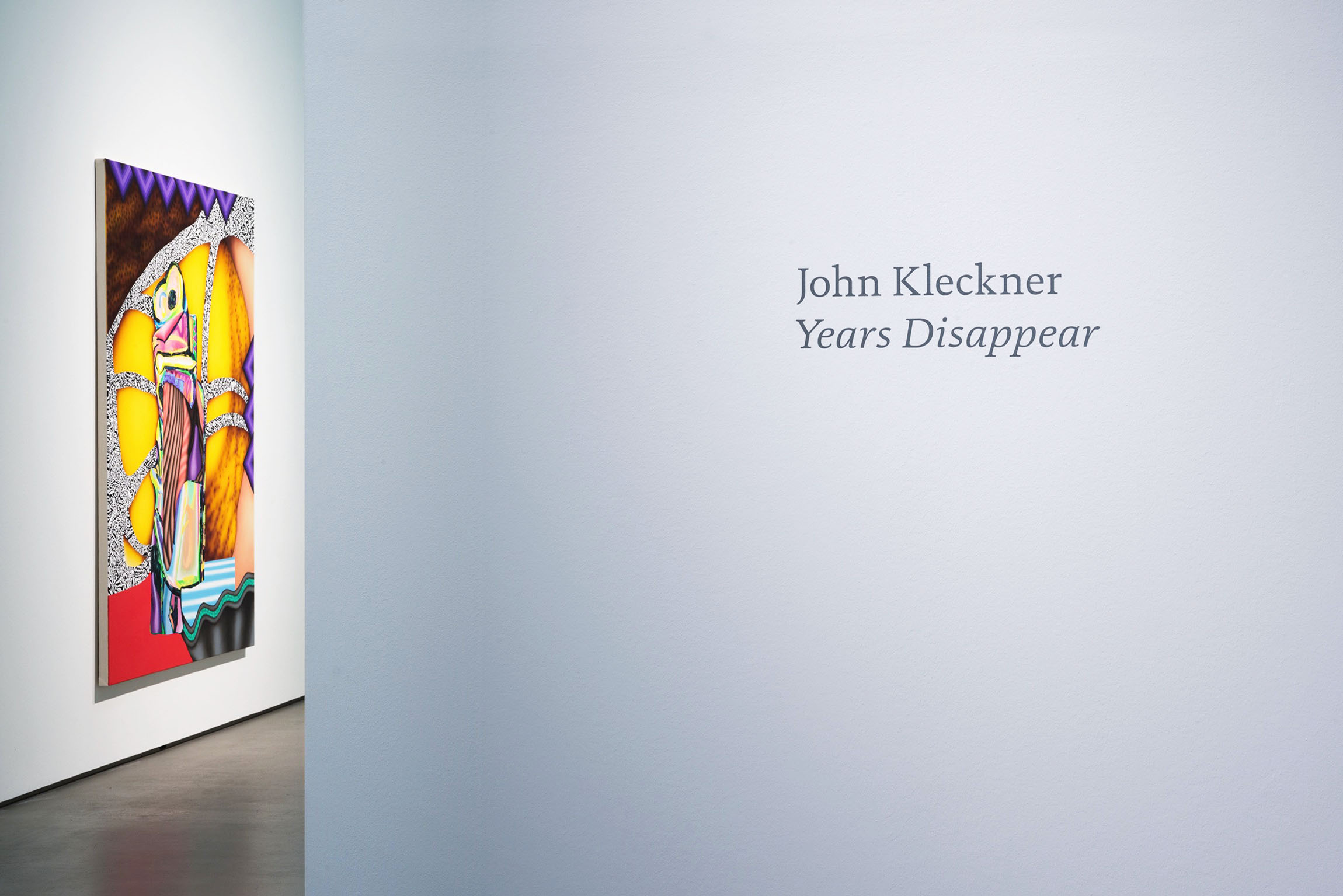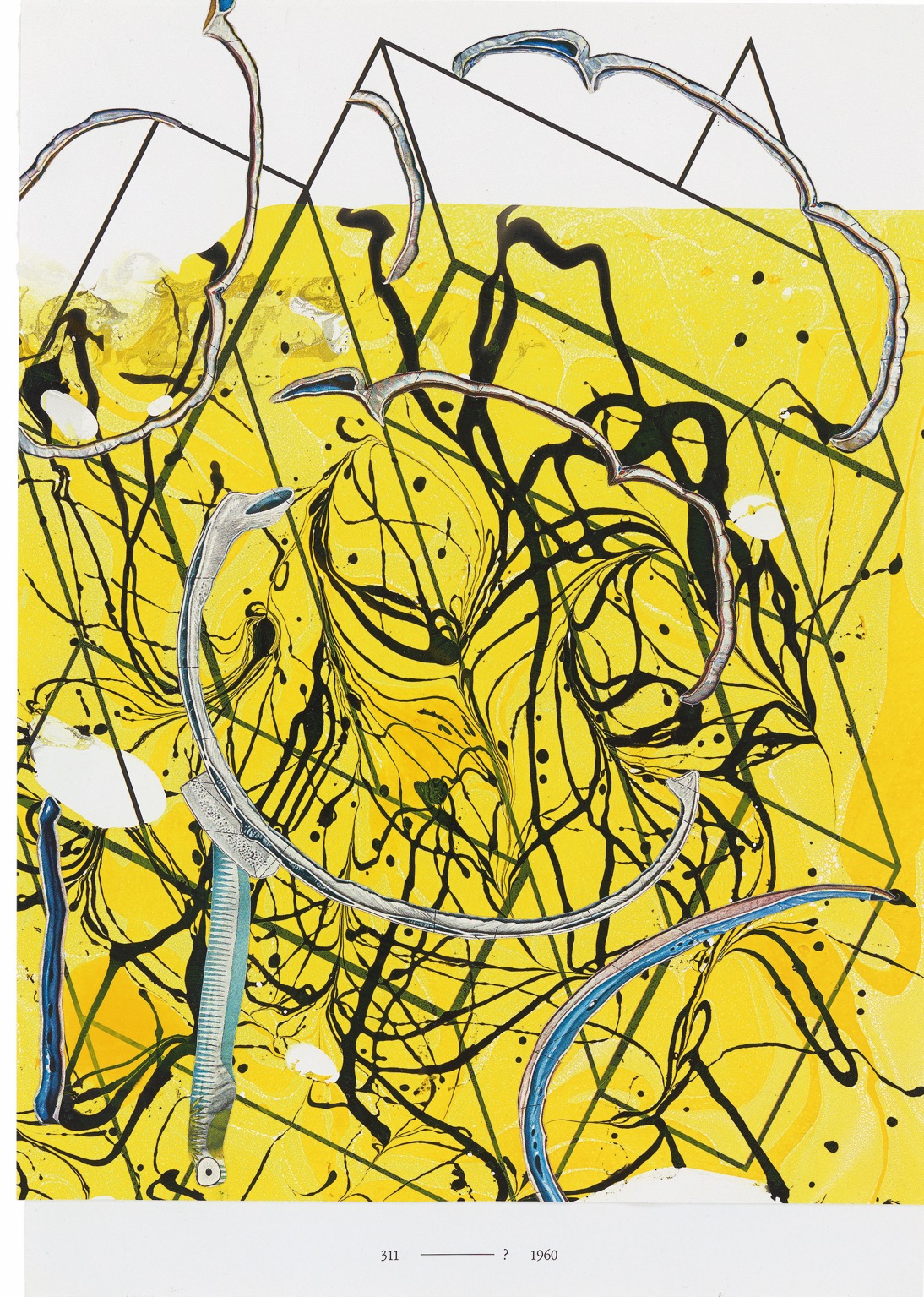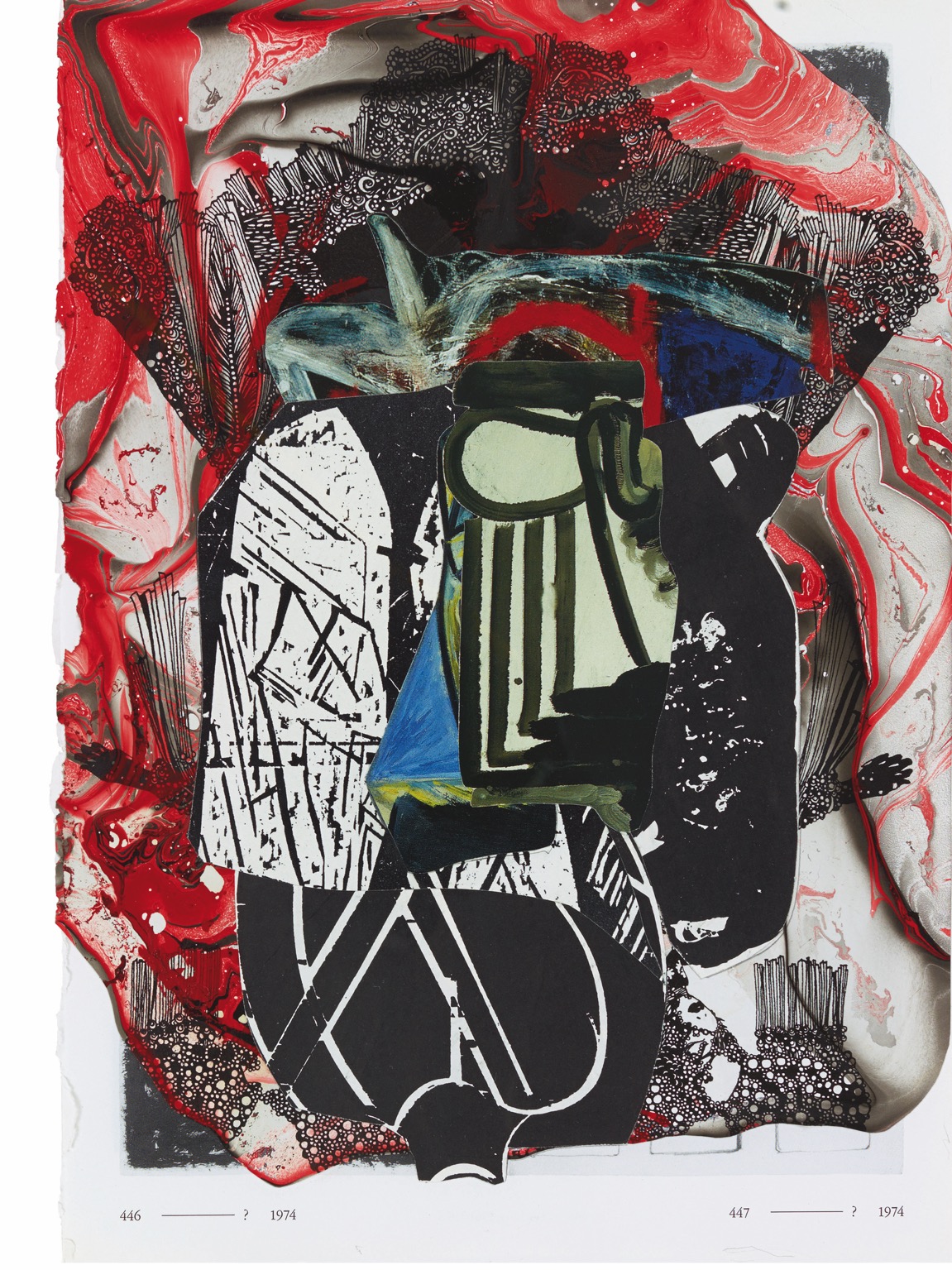John Kleckner
Years Disappear
Works

Paranormal Sulk
2017
Oil, acrylic and Flashe on canvas
200 × 160 cm

Chiringuito Strand
2016
Oil, acrylic and flashe on canvas
220 × 160 cm

Memorabilia Hub
2017
Oil, acrylic and flashe on canvas
200 × 160 cm

431—? 1971
2012–2017
Mixed-media collage on paper
29.6 × 21.1 cm

311—? 1960
2012–2017
Mixed-media collage on paper
29.6 × 20.9 cm

221—? 1958
2012–2017
Mixed-media collage on paper
29.6 × 20.9 cm


379—? 1963
2012–2017
Mixed-media collage on paper
29.6 × 20.9 cm

287—? 1959
2012–2017
Mixed-media collage on paper
29.5 × 21.3 cm

323—? 1961
2012–2017
Mixed-media collage on paper
29.6 × 21 cm

122—? 1954
2012–2017
Mixed-media collage on paper
29.6 × 20.8 cm

60—? 1951
2012–2017
Mixed-media collage on paper
29.6 × 21.5 cm
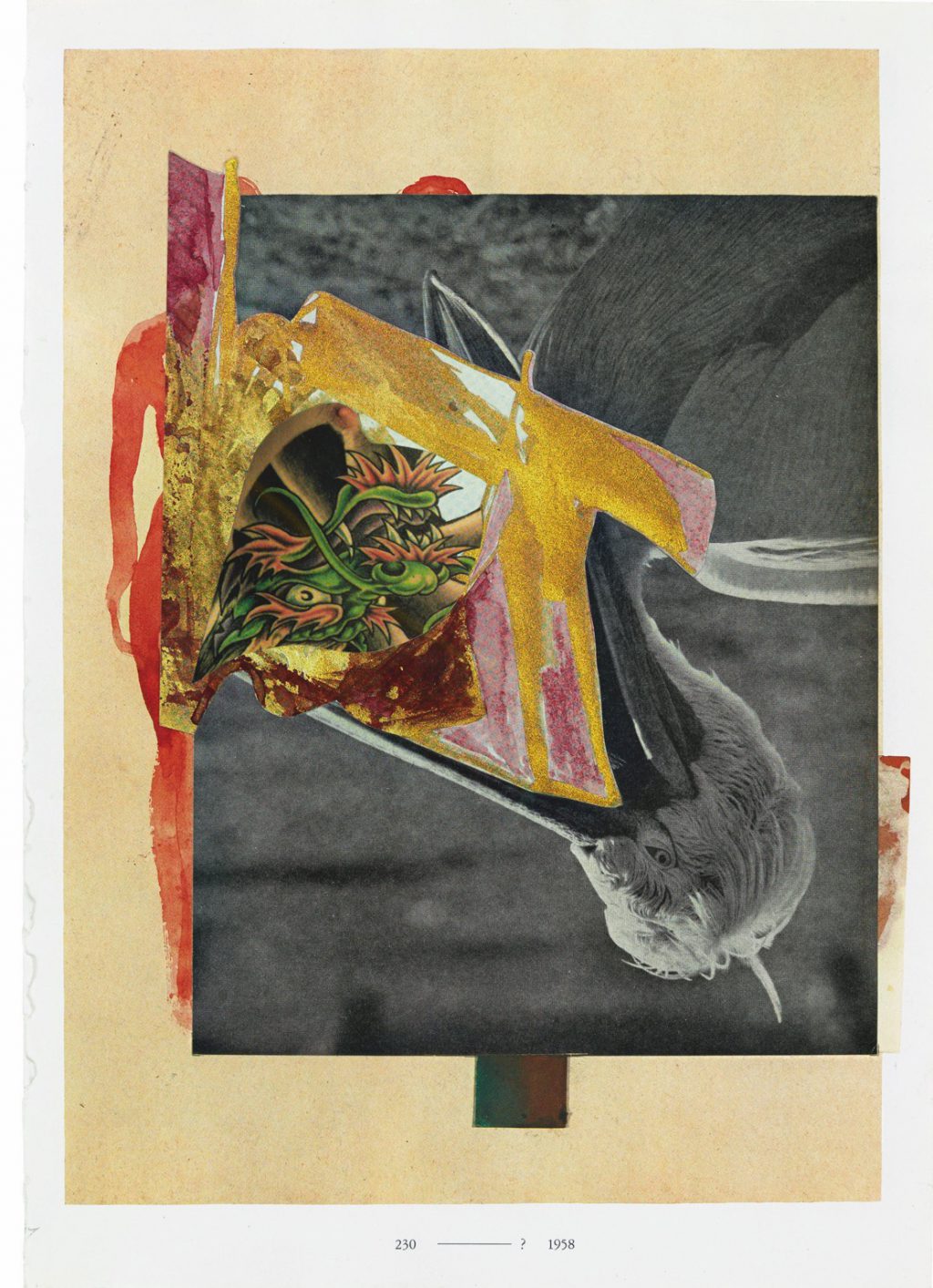
230—? 1958
2012–2017
Mixed-media collage on paper
29.6 × 21.1 cm

After After
2017
Oil, acrylic and flashe on canvas
185 × 120 cm

Regal Racket
2017
Oil, acrylic and flashe on canvas
135 × 110 cm

Sunrise Browser
2017
Oil, acrylic and flashe on canvas
135 × 75 cm

Otaku Squawk
2016
Oil, acrylic and flashe on canvas
140 × 90 cm

Pressure Point
2016
Oil, acrylic and flashe on canvas
200 × 160 cm

On the Fence
2015
Oil, acrylic and flashe on canvas
220 × 150 cm

306—? 1960
2012–2017
Mixed-media collage on paper
29.6 × 21.6 cm
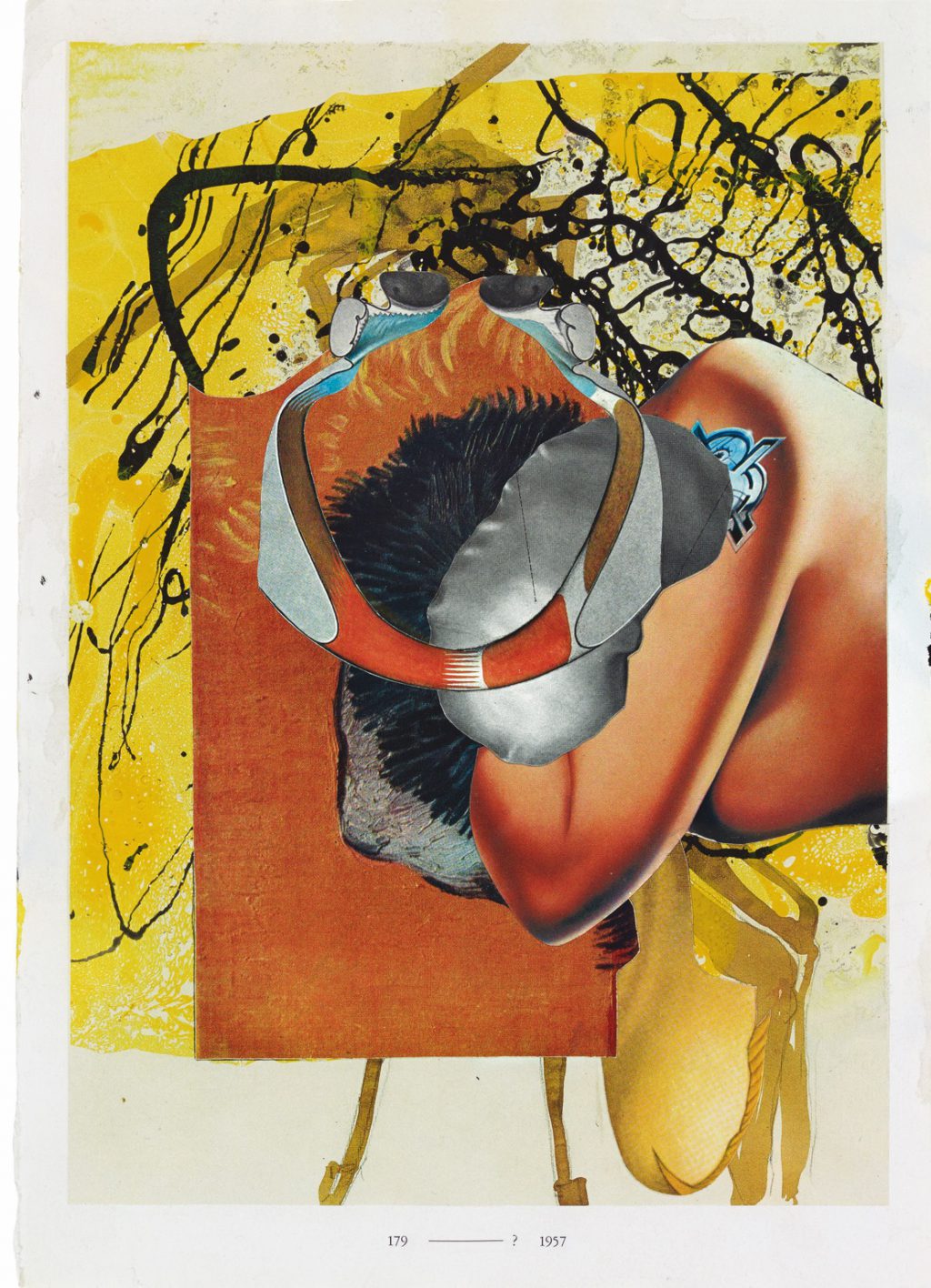
179—? 1957
2012–2017
Mixed-media collage on paper
29.5 × 21 cm

446—? 1974 447—? 1974
2012–2017
Mixed-media collage on paper
29.6 × 21.1 cm

Quarter-Tone Totem
2016
Oil, acrylic and flashe on canvas
200 × 160 cm
Text
Two years ago, American artist John Kleckner, born in Iowa in 1978, took up painting again. After working almost exclusively with ink, watercolor and pencil on paper for several years, he created a dozen large-format paintings, which will be on view for the first time in our exhibition. This change of technique has also prompted a change of style: the organic shapes and naturalistic subjects of his works on paper have given way to geometric structures, injecting an entirely new tension into his compositions. Now we find bars of carefully wrought plasticity, intricately assembled arrows and, in matt silver shimmer, serpentine convolutions as well as many zones of color. But how do these elements relate within the picture? Patches of quirkily mutating pigment and strangely falling shadows pose a riddle to the viewer: are they two-dimensional shapes that overlap, or are they three-dimensional arrangements of objects?
Kleckner’s works do not reveal the artist’s intention immediately. And however hard we try, almost none of his compositions can be nailed down in figurative terms. But our attempts to grasp and analyse his paintings yield a different insight: if at first the collaged compositions and color variations suggest random compilations of heterogeneous components, closer scrutiny soon reveals that there is more to this than stand-alone arrangements. Again and again, similar forms and hues emerge, sometimes prominently placed, sometimes cunningly concealed. They belong to a surprisingly consistent formal repertoire that Kleckner has developed over the last three years and exploited in various ways for his series of paintings. With this spectrum of elements, Kleckner’s style is treading new territory, lending an unsuspected momentum to his work. Many motifs seem to hark back to past visual worlds, notably from the 1960s to the 1990s – surely no coincidence for an artist who has declared the German term “Stilbruch” (breach of style) to be one of his favourite words.
Continue reading
Kleckner’s new repertoire of form is based on an on-going series of paper collages that he started making in 2012. They contain fragments from significant references to art history, photos, graphic designs, snippets of global pop culture and much more besides. Many of these collages have never been translated into a painting, while others have been processed several times over with variations. But Kleckner does not cling slavishly to his own templates. Ultimately, the colors and shapes are always varied. Thus every painting is liberated from its precursor, and by the end of the process two solitaires have been created. Kleckner refers to them as “carefully planned accidents”.
In the collages themselves there are no text elements to be found – at least, almost none. For although Kleckner himself dispenses with cut-out letters, each collage bears an enigmatic title printed at the bottom of the page: a number followed by a lengthy dash, followed in turn by two or three blanks, a question mark and ending with a year. The pages with these enigmatic titles were taken from the exhibition catalogue for Joseph Beuys’ The Secret Block for a Secret Person in Ireland. Beuys attributed these combinations to the 296 works in his Block of 456 drawings, which had no specific titles of their own. The number in front is the running inventory number and changes accordingly. Kleckner could not resist this blend of both the “impenetrable and mysterious” and the “pseudo-scientific and specific”. It allowed him to appropriate and apply a systematic framework for his own Block, which he eventually called Questions for a Secret Person in Iowa.
Kleckner’s first encounter with the work of the legendary German action artist and inventor of the Social Sculpture was a determining moment in his artistic development. As a student he came across two small volumes about Beuys’ early drawings that shook his views of art – and what it could and should do – to the core. In the next few years, the idea that reproductions, like those of Beuys’ works, might function as a springboard for his own original work began to take shape. Now Kleckner’s creations have been reproduced in his first monographic exhibition catalogue – and they in turn can serve other artists as a basis for originals of their own. It is potentially a chain reaction, and Kleckner certainly sees the funny side of it.
Catalogue

Years Disappear
Edited by
Juerg Judin and Pay Matthis Karstens
Text by Juerg Judin
With a conversation between Arturo Herrera and John Kleckner
295 × 240 mm
56 pages, hardcover
26 color ill.
Published by Galerie Judin, 2017
ISBN 978-3-943689-07-5

